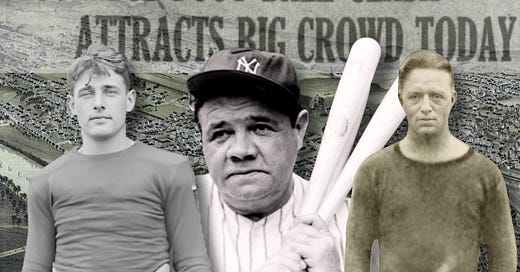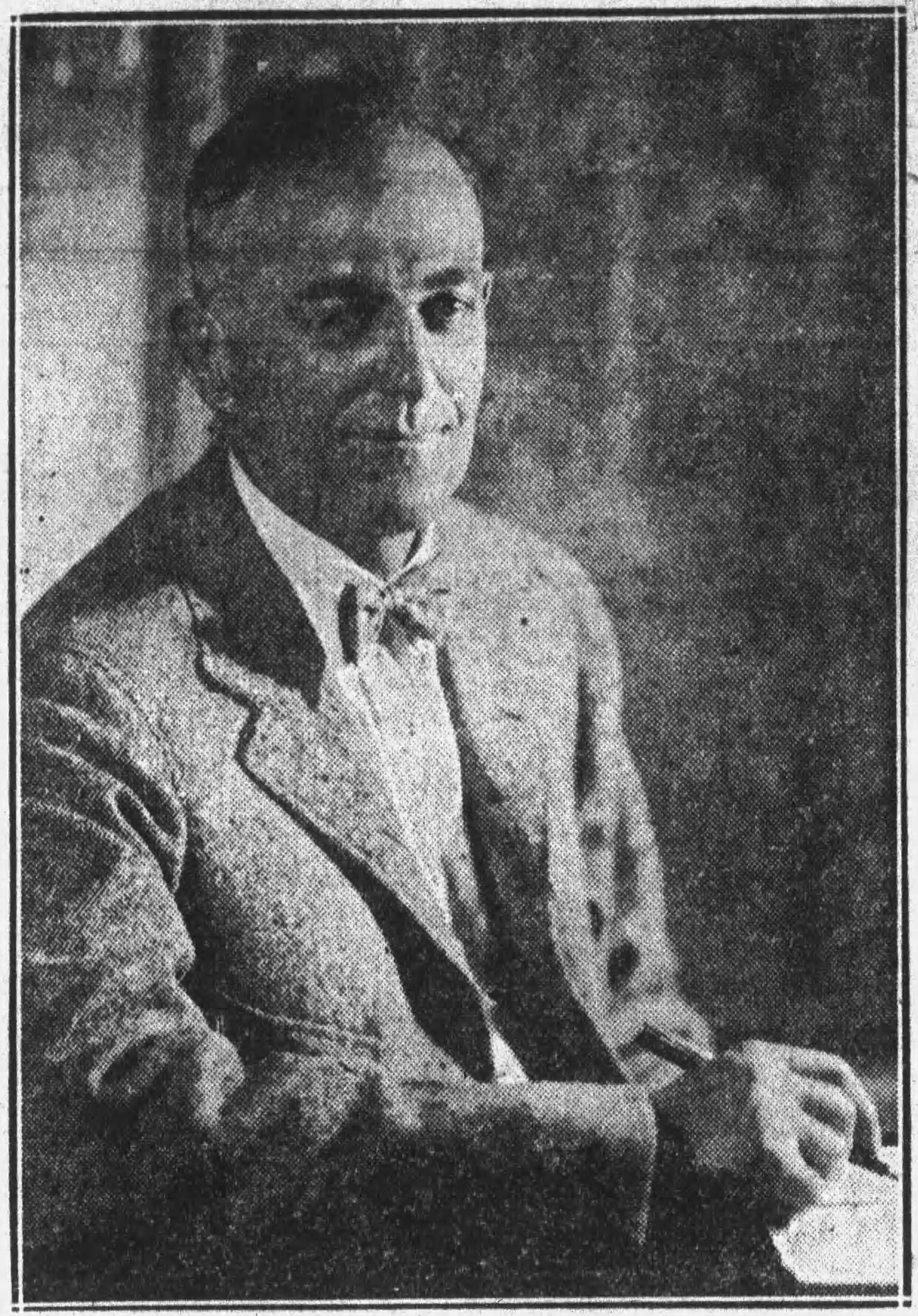When Babe Ruth and major college football came to Wilkes-Barre
One of the biggest college football games ever played in town happened days after Ruth's appearance.

History remembers Babe Ruth and the home run he hit in Wilkes-Barre. The mammoth moon shot, reportedly measuring 650-plus feet, remains nationally debated and locally celebrated.
What’s been forgotten, however, is that the people and the press of the Wyoming Valley at the time were more interested in a competing sporting event.
While Ruth’s appearance was announced just a week before it happened, hype had been building for months around a Bucknell-Villanova college football game. Keep in mind, Wilkes University and King’s College were still a few decades out from founding their programs.
Ruth’s exhibition game happened on Tuesday, Oct. 12. The football game was Saturday, Oct. 16. Both contests were played on the same grounds at Artillery Park.
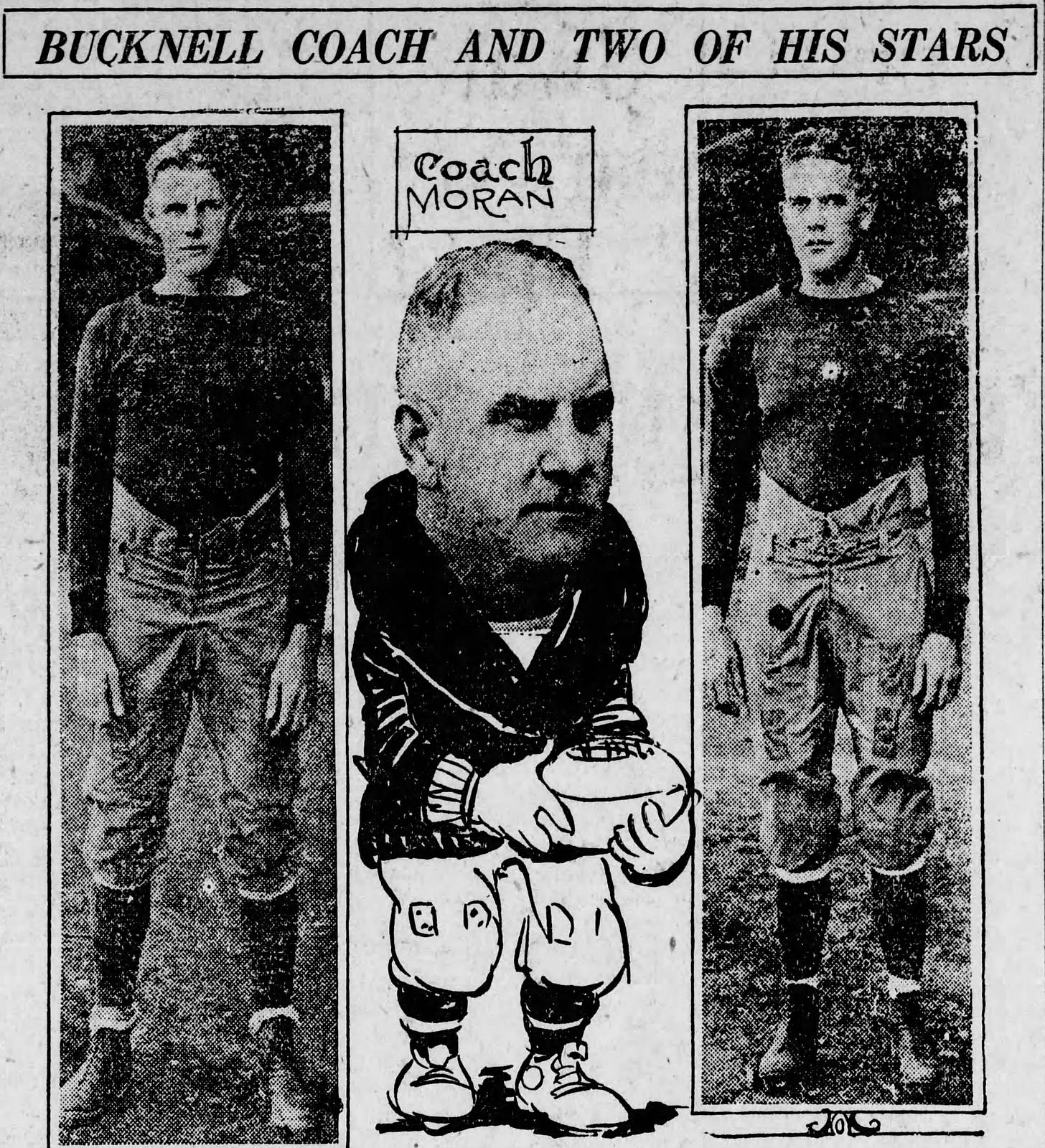
The Wilkes-Barre Evening News on May 1 published a photograph, which showed promoter Morris Kemmerer signing what it called “probably the biggest sport contract ever written for an event in Northeastern Pennsylvania.” As the game drew closer, the Wilkes-Barre Record said it “promises to be one of the most colorful and gripping spectacles in local sport history.”
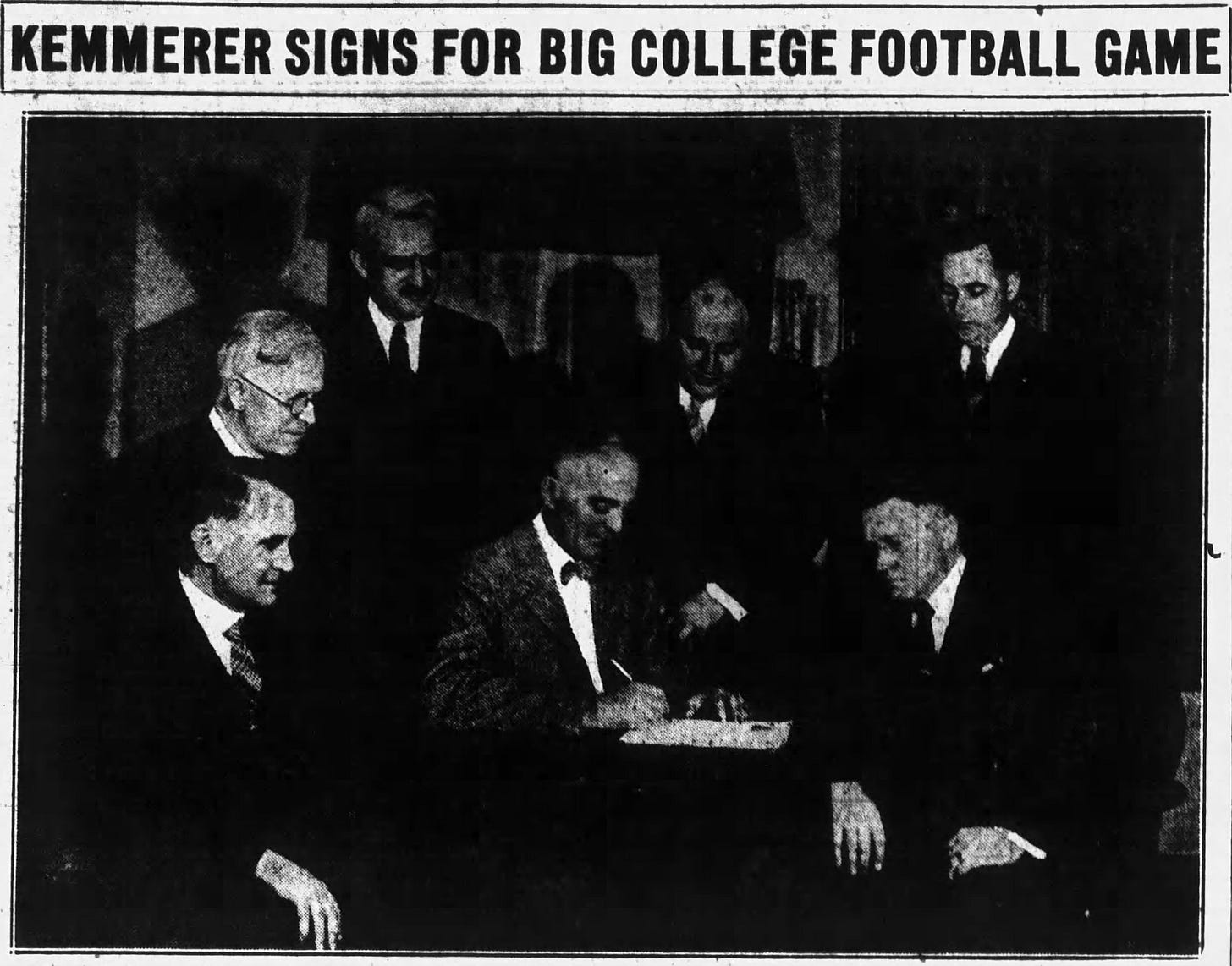
Kemmerer was the business manager of the city’s minor league baseball team, the Wilkes-Barre Barons. The Barons played in the New York-Penn League and drew a few thousand fans per game at Artillery Park.
Demand for Bucknell-Villanova tickets was expected to far exceed Artillery Park’s capacity. It was the biggest college football game played in Luzerne County since 1908, when 9,000 fans witnessed Jim Thorpe kick three field goals as Carlisle beat Penn State, 12-5, at Wilkes-Barre’s Driving Park.
In undertaking the promotion of the game, Kemmerer invested in the proper accommodations. Per the Times Leader:
“Artillery Park … will be fitted in a U-shaped bowl for this game. Weeks before the contest is scheduled, carpenters will erect temporary bleachers in addition to the seats now available. With the proper laying out of the field, an architect has estimated that close to 18,000 fans can be comfortably taken care with seats."
Back at this time, Bucknell and Villanova were eastern independent teams. In 1925, Bucknell had a 7-3-1 record. The most notable game on its schedule was a 13-7 loss at Navy, which, the following season, claimed a national championship. Meanwhile, Villanova was coming off a 6-2-1 campaign.
While no one at Bucknell or Villanova was as famous as Ruth — by then a four-time World Series champion and the “Home Run King” — both schools had star power.
Charley Moran, the Bucknell head coach, had a 38-8-4 record at Texas A&M and was 52-6-1 at Centre College. Bucknell back Ed Halicki, who later captained the 1928 squad, hailed from Hanover Township.
Harry Stuhldreher was entering his second season as Villanova’s head coach. Stuhldreher was one of the “Four Horsemen of Notre Dame” and his assistant coach, Ed Hunsinger, played line for that famed Irish team. Villanova’s third-string quarterback, Chuck Cummings, was from Scranton.
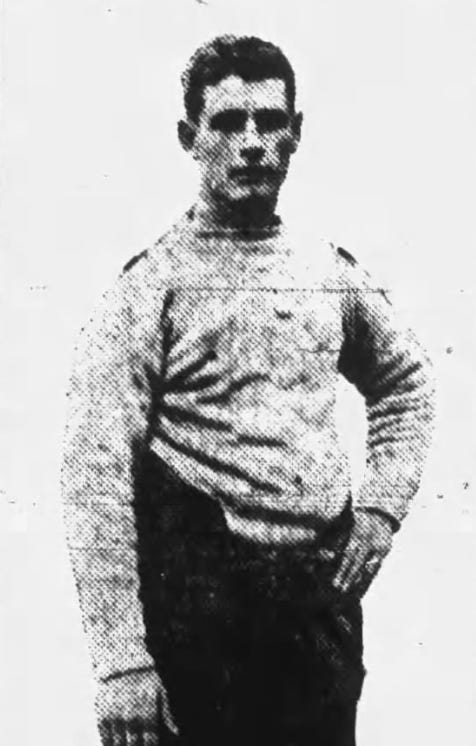
On Oct. 5, an item appeared in the Times Leader, reporting that a Scranton-based promoter was booking a barnstorming tour with Ruth. This announcement was made during the 1926 World Series, which saw the St. Louis Cardinals beat Ruth’s New York Yankees, 4 games to 3. The clinching game was Oct. 10.
“(He) tried to secure Artillery Park for a game on Friday, Oct. 15,” the paper reported, “but because the park has been converted into a football stadium, the project was abandoned.
“The game would hardly have drawn anyway.”
It’s interesting to read local reports downplaying — and even resenting — the potential of hosting a superstar like Ruth. But, the local press had a friendly relationship with Kemmerer and were big cheerleaders of his, hoping to refocus the spotlight on the upcoming Bucknell-Villanova game.
One day later, on Oct. 6, the Wilkes-Barre Evening News continued the local media’s fanatical promotion of Kemmerer’s game:
“Both teams are evenly matched and both are confident of winning. Arrangements are being made to handle a crowd of 20,000 persons. That mob of football lovers will set a new record for attendance here.
“Wyoming Valley is represented at both institutions by football players and students. This alone will cause to create much interest in the section and which will evidently lend much color and spirit to the game when it is played here. Nothing is being left undone to make the game a success.”
Also on Oct. 6 — just a day after declaring Ruth would not play in town — reports stated he was indeed coming to the Wyoming Valley. The exact details, including the ballpark and opponent, were still being finalized.
In the days that followed, promoter Pete Smaltz, of Hughestown, secured a lease of Artillery Park to host the game. Ruth played for Hughestown, which lost, 8-1, against Larksville. While in town, in addition to hitting his historic home run, Ruth visited Mercy Hospital in Wilkes-Barre, dined with friends on Plane Street in Avoca and participated in a radio interview with WBRE at the Irem Temple in Wilkes-Barre.
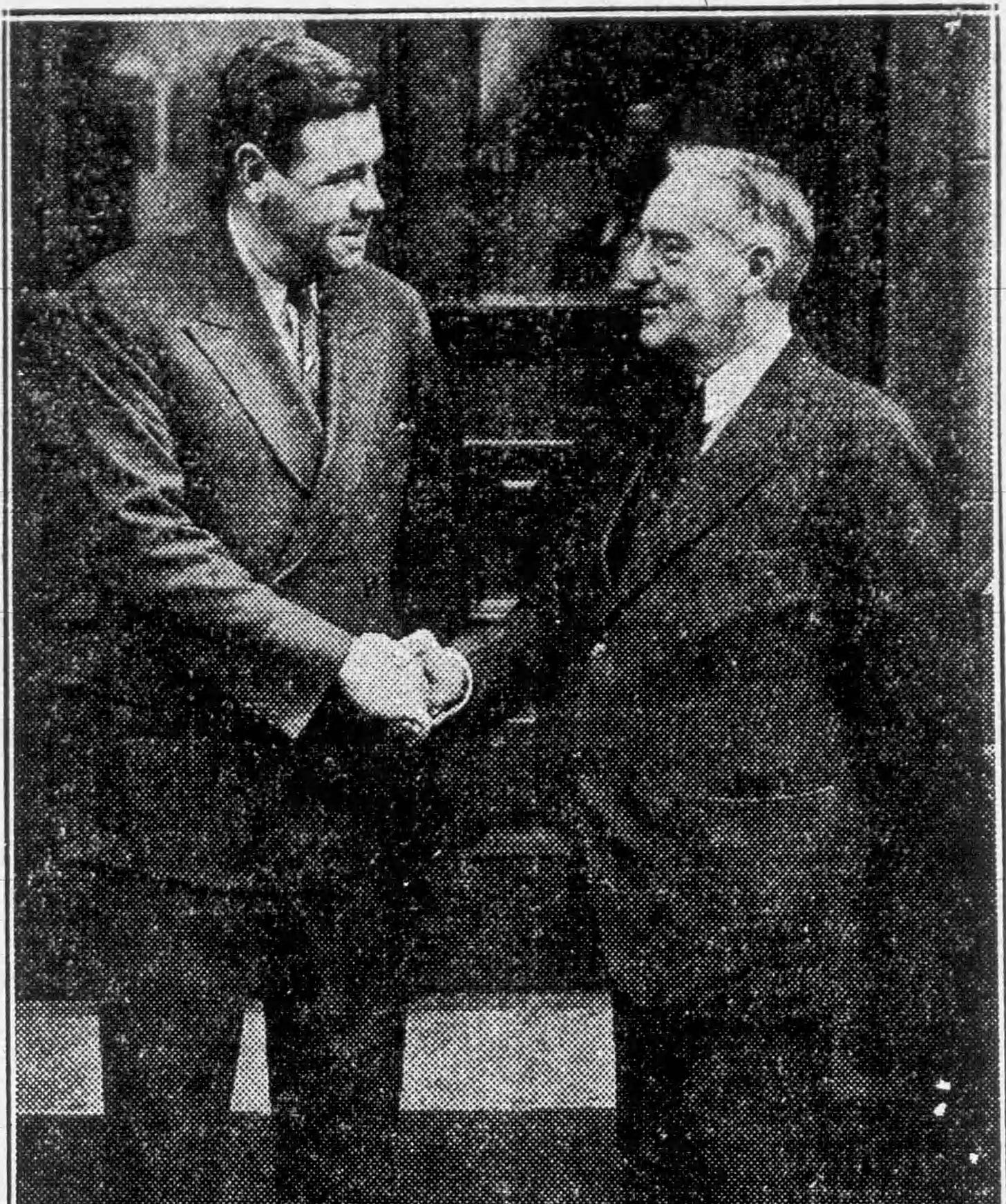
Attendance figures vary for Ruth’s game at Artillery Park. Estimates range from 1,500 to 3,000. Another 3,000 reportedly attended the radio program at Irem Temple.
Artillery Park maxed out at 20,000 seats for Bucknell-Villanova — although one postgame report stated the attendance was 25,000. Two days before kickoff, 18,000 tickets had reportedly been sold and seven gates were to be used as entrances for the game that kicked off at 2:30 p.m. Security would be extra tight with 100 police and emergency response officers, as well as 50 mounted soldiers, on duty.
Bucknell arrived Saturday morning at 7:30 a.m., checking in at the Redington Hotel, while Villanova checked in at 9:30 a.m. at Hotel Sterling. Betting odds narrowly favored Bucknell, 6 to 5.
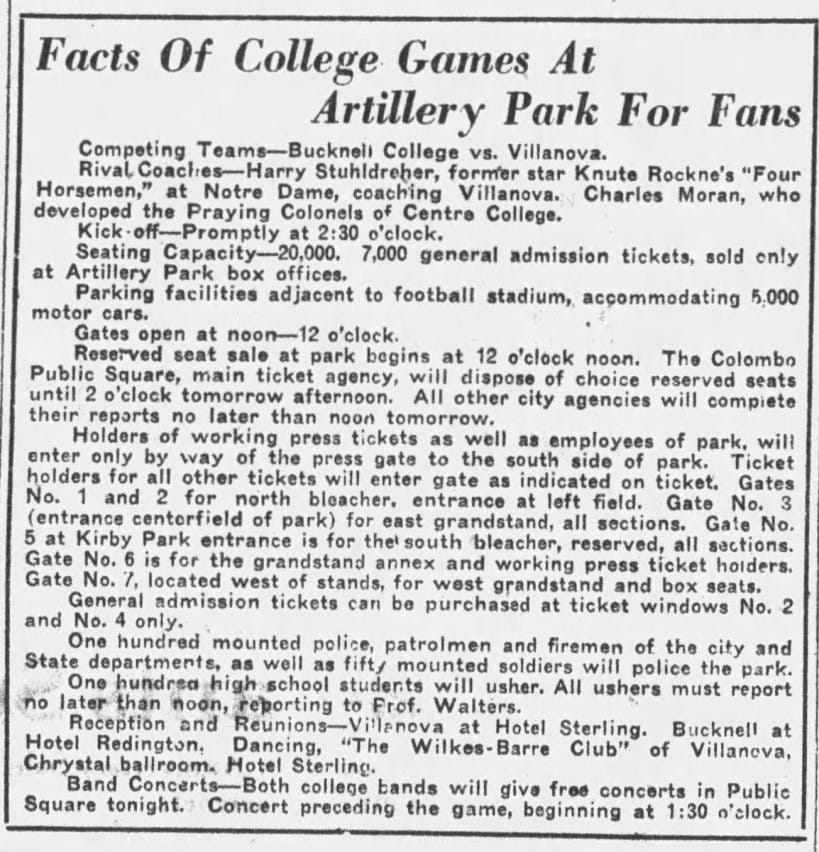
“Old Wyoming Valley caught the collegiate spirit,” the Times Leader reported on its front page. “Inspired by the excellent music of the two college bands, the thousands of spectators and the enthusiasm of the rival cheerleaders, the friends and alumni of the institutions and the fans of the sport found thrill after thrill.”
Bucknell struck first in the contest, kicking a second-quarter field goal for a 3-0 lead that held into the fourth quarter.
Johnny Slane, a backup back for Villanova, subbed into the game and ran for a touchdown in the fourth quarter. It held as the winning score and Villanova earned the upset, 7-3.
The local press glowed about the game, considering it to be a success and a precursor for future football games. Kemmerer, too, expressed his hope to stage more games and make Wilkes-Barre a destination for the sport.
In fact, Kemmerer brought two more big games to Artillery Park in the 1926 season. On Oct. 29, the NFL’s Pottsville Maroons defeated the New York Giants, 3-0. On Nov. 13, Muhlenberg beat Dickinson, 13-0.
Unfortunately, the latter two games failed to attract much attention. Kemmerer lost money on his football promotions — especially on Muhlenberg-Dickinson.
The Allentown Morning Call described the second college game as a “drab contest” and ran a headline saying, “Morris Kemmerer’s attempt at football promotion fails to draw any crowd at all.”
The Bucknell-Villanova game was such a successful venture, though, that both schools wished to return to Wilkes-Barre in 1927. Kemmerer struggled to negotiate with high schools that played on Saturdays and were unwilling to work around the college game.
The 1927 Bucknell-Villanova contest was instead played at Brooks Athletic Field in Scranton. About 10,000 attended the game.
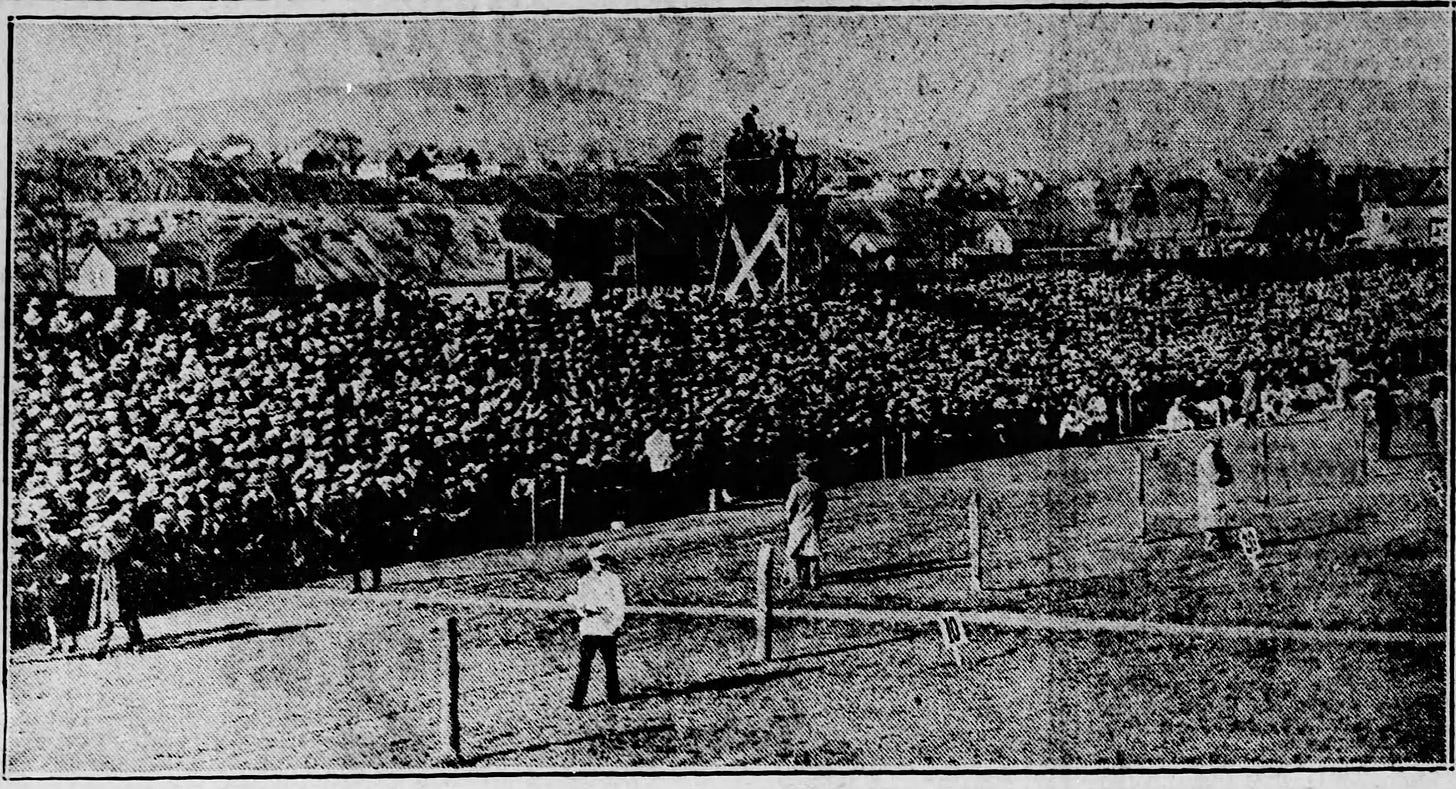
Kemmerer died in 1966. He was 84.
Remembered in his obituary as a “one-time nationally known sportsman,” Kemmerer had grown up on a farm in Dorrance Township. He lived many lives as a farmer, lumberman, business manager, coal executive, hunter and housing developer.
Kemmerer’s obituary also touted his accomplishments as a football promoter, specifically mentioning just one of his promotions: Bucknell-Villanova.
Kemmerer was clearly on to something, satisfying the Greater Scranton/Wilkes-Barre area’s appetite for high-level college and professional football.
While this was but a brief chapter of Kemmerer’s and the Wyoming Valley sports scene’s life, it was a spectacular one, too.
There are few times when the region was as nationally relevant as October of 1926.

